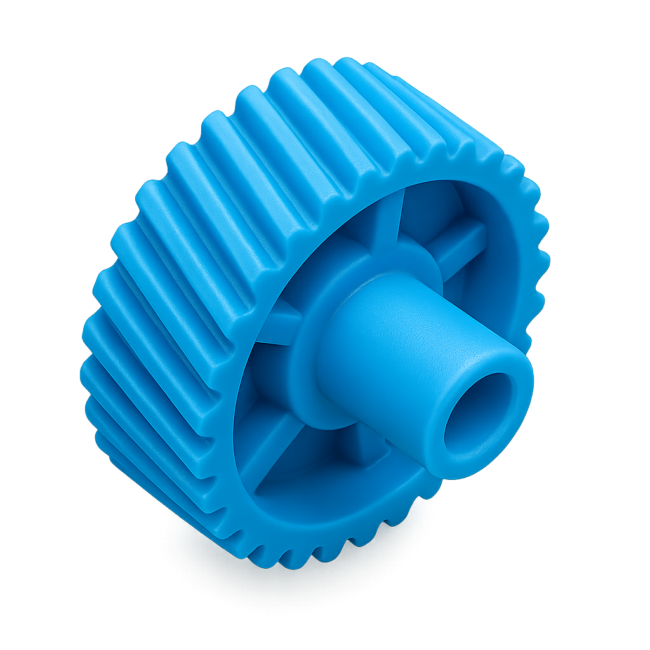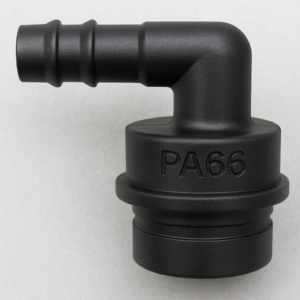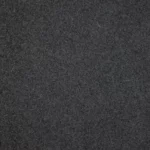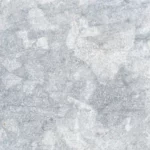Polyamide (PA)
Polyamides (PA), commonly known as nylon, are a versatile class of polymers that have played an important role in various industries since their introduction in the 1930s. Thanks to their excellent mechanical properties such as high strength and elasticity as well as their chemical resistance, polyamides are used in a wide range of applications in the textile industry, automotive engineering, electronics and many other areas. Below you will find an overview of all relevant information such as production, advantages and disadvantages as well as production methods and differences compared to other plastics.

Structure and composition of polyamides
Polyamides are artificially produced polymers that are made up of repeating units of amino (-NH-) and carbonyl (-CO-) groups and are classified as thermoplastics. This structure gives them unique properties.
Polyamides are mainly produced using polymerization processes, in particular step-growth polymerization. Two of the most common polyamides are PA6 and PA66:
- PA6 is produced by the polymerization of caprolactam, a monomer formed by direct polymerization.
- PA66 is formed by the reaction of hexamethylenediamine with adipic acid.
These processes enable the production of polyamides with specific properties that are tailored to the requirements of different applications.
Main advantages of polyamide

Versatility
Polyamides can be processed into various synthetic fibers such as nylon or perlon with different attributes and are therefore versatile.

High resistance
Thanks to its high strength combined with high flexibility, polyamide can be used for both soft garments and robust tanks.

Waterproof
Polyamide is both waterproof and water-repellent. It is therefore used for weatherproof clothing or packaging and fuel lines, for example.

Surface quality
Depending on their composition, the synthetic fibers made of polyamide can take on different textures, from smooth to rough to matt and shiny, and are therefore flexibly adaptable.
Polyamide processing techniques
Injection molding
All polyamides, including polyamide 6 (PA6) in particular, are suitable for injection molding. This is sometimes the most common manufacturing process for industrial parts made from polyamide. The polyamide PA66 has a slightly higher temperature resistance during injection molding, so that it can also be used at molding temperatures of 250 - 290°C, while a cylinder temperature of max. 220 - 250°C is suitable for PA6. The mold temperature for both polyamides is around 50 - 90°C. The warmer the mold, the better the surface finish of the parts will generally be. An injection pressure of up to 1500 bar is also recommended. After injection moulding, the parts should be carefully cooled to minimize distortion. Optionally, the parts can also be reinforced with glass fiber or glass beads during the manufacturing process by mixing the additional material into the PA injection molding granulate. This can reduce distortion and increase the dimensional stability of the parts.
Extrusion
Parts made of polyamide are mainly produced by extrusion, e.g. pipes, sheets, profiles or monofilaments. PA66 is best suited for extrusion. Drying and cooling are similar to injection molding processes. Extruded polyamide products are characterized by high strength, hardness and toughness. They also have a high temperature resistance with a range of -40 to +100°C. It should also be emphasized that the parts have good resistance to organic foods and fuels, which is why they are often used in the automotive or packaging industry.
Extrusion blow molding
Extrusion blow molding with polyamides is often used for the production of tank containers and other hollow molded parts. In recent years, this processing method has become increasingly important and is particularly useful in the automotive sector. The polyamides PA6 and PA66 are particularly suitable for this process, as they have better toughness and lower moisture absorption. The molded parts are often reinforced with glass fiber to achieve better stability. Pre-drying is particularly important in this process, as both the stability of the hose and the surface quality depend on the moisture content of the material. Durethane can also be used, particularly in the manufacture of tanks and pressure vessels, but this entails additional processing instructions.
Production of films
The production of polyamide films is particularly relevant for the packaging industry. They are mainly produced by casting (cast process) or extrusion. The “chill roll” method is used here. The polyamide granulate is first melted and then either poured as a molten mass onto a chill roll or extruded from a die and then placed on the cooled roll. The polyamide mass then cools on this roller and the film is formed. The properties of the roller have a significant influence on the film properties. Depending on the speed of cooling, the roller and the number of rollers and layers, different thicknesses and lengths can be produced. The highly flexible production process allows the manufacture of a wide variety of films, which can be used for food packaging or industrial packaging, for example.
Areas of application for polyamide
Automotive industry
Polyamide is a key material in the automotive industry. It is used for engine covers, air intake manifolds, tank lines, connector housings and fastening clips. Thanks to its high temperature resistance, strength and chemical resistance, polyamide is ideal for components in the engine compartment as well as for fuel and cooling systems. PA66 in particular, as shown in the picture as a breather hose connection, and PA12 are well established here.


Consumer products
Polyamide is used in many everyday products - from toothbrushes and dowels to textile fibers for clothing and carpets. Due to its high strength, abrasion resistance and heat resistance, polyamide is particularly suitable for durable, mechanically stressed consumer goods. It is also frequently used in kitchen appliances, sports equipment and tool handles.
(Packaging) industry
In the packaging industry, polyamide is primarily in demand as a film material. PA films are characterized by their high tear resistance, good oxygen barrier and thermal resistance. They are often used in combination with other materials (e.g. PE, EVOH) for vacuum packaging, cooking bags or food packaging. PA6 and PA66 in particular are used for multi-layer film structures.

Comparison of the mechanical and chemical properties of polyamides
Polyamides such as PA6, PA66, PA12, PA11, PA46 and PA610 sometimes differ significantly in their mechanical and chemical properties. PA66 and PA46 are characterized by high tensile strength and rigidity, while PA12 and PA11 are more flexible and lighter. The melting points also vary greatly: PA46 tops the list at just under 300 °C, while PA12 and PA11 melt at around 175-185 °C. PA6 and PA66 absorb a relatively high amount of moisture, which can limit dimensional stability in humid environments.
PA12 and PA11 are particularly chemically resistant - ideal for applications with prolonged media contact, such as in the automotive or packaging industry. PA610 offers a good balance between chemical resistance and processability. PA46 scores highly in terms of thermal resistance, but is more difficult to process. PA11, which is bio-based and moisture-resistant, is particularly sustainable.
| Feature | PA6 | PA66 | PA12 | PA11 | PA46 | PA610 |
|---|---|---|---|---|---|---|
| Density [g/cm³] | 1,13 | 1,14 | 1,01 | 1,03 | 1,18 | 1,07 |
| Tensile strength [MPa] | 70 – 85 | 80 – 95 | 45 – 55 | 50 – 60 | 90 – 120 | 60 – 70 |
| E-modulus [MPa] | 2500 – 3000 | 2900 – 3300 | 1400 – 1800 | 1300 – 1700 | 3300 – 4500 | 1700 – 2200 |
| Water absorption [%] | 2,5 – 3,0 | 2,0 – 2,5 | 0,2 – 0,4 | 0,2 – 0,4 | 2,0 – 2,5 | 1,2 – 1,8 |
| Melting point [°C] | 220 – 225 | 255 – 265 | 175 | 185 | 295 – 300 | 220 |
| Chemical resistance | Medium | Medium | Very good | Very good | Medium | Good |
| Flexibility | Medium | Medium | High | High | Low | Medium |
| Workability | Good | Medium | Very good | Very good | Difficult | Good |
This results in clear fields of application, at least based on the properties: PA6 and PA66 are suitable in theory for mechanically stressed machine parts, but are by far the most commonly used throughout industry due to their cost efficiency and ease of manufacture. PA12 and PA11 are ideal for flexible hoses and packaging. PA46 is used in heat-resistant precision components, while PA610 is convincing in structural applications such as household appliances or agricultural technology. Ultimately, of course, the choice of polyamide remains very individual and is linked in particular to requirements, price and availability.
All technical advantages at a glance

High toughness

High strength

High abrasion resistance

Chemical resistance

Thermal stability

Good workability

Cost-efficient

Bio-based/recyclable depending on polyamide
Suitable manufacturing processes
Book personal meeting
Get in touch now
* By submitting the form, you agree to the assemblean privacy policy.
All information is without guarantee. Typing errors, mistakes and changes reserved.





